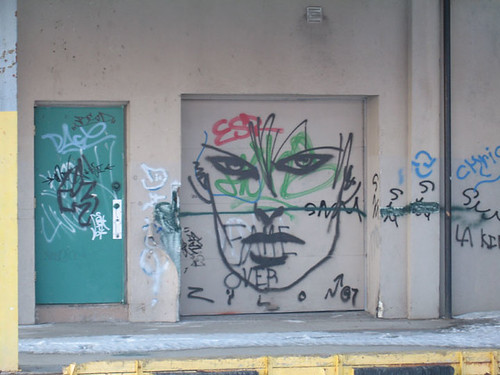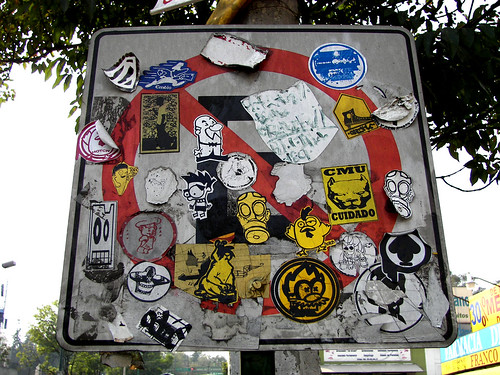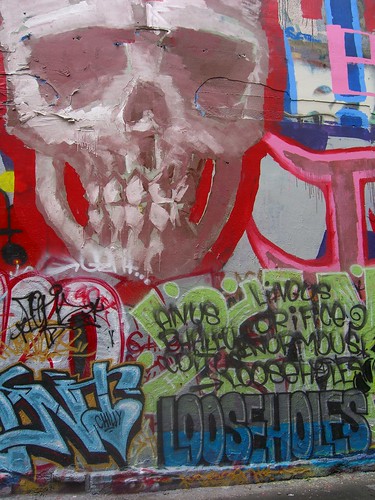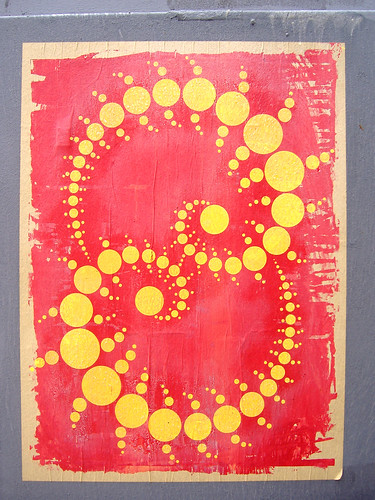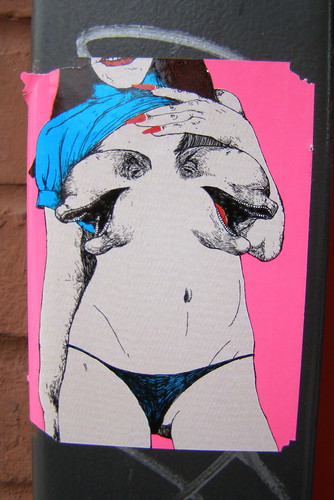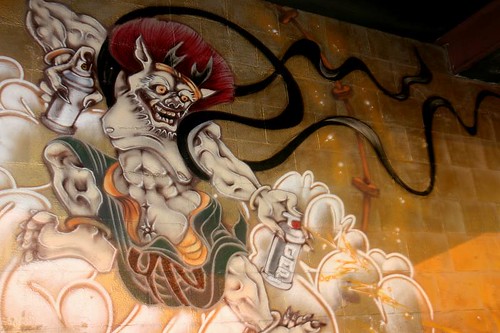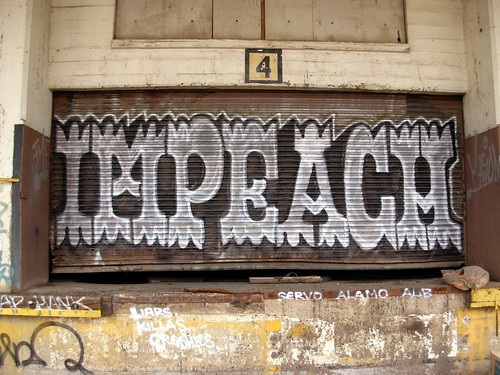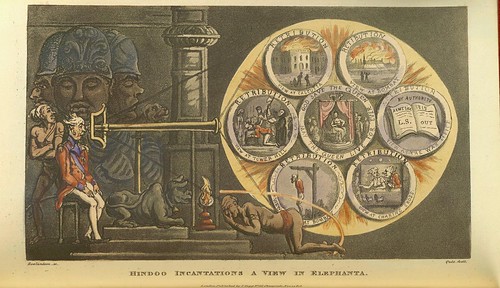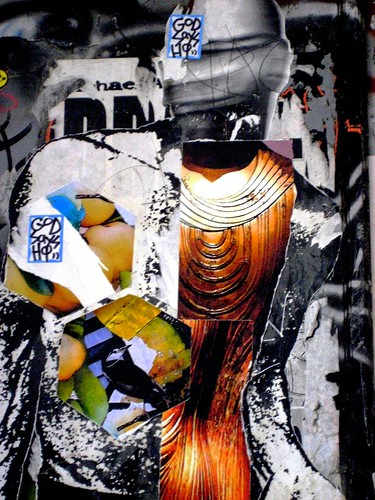"for the rest of us" | edited by Morris Armstrong, Jr. proudly a.k.a. "Little Mo", author of The Concrete Jungle Book
31 March 2008
"a magic time or place or person that erases the boundary between humans and animals"
The belief that animals are like us in some essential way is the source of the enduring and widespread myth of a magic time or place or person that erases the boundary between humans and animals. The place is like the Looking-Glass forest where things have no names, where Alice could walk with her arms around the neck of a fawn. The list of people who live at peace among animals would include Enkidu in the epic of Gilgamesh and the many mythical children who are raised as cubs by a pack of animals, like Romulus and Remus, Mowgli, and Tarzan, like Pecos Bill (suckled by a puma) and Davy Crockett (raised among mountain lions). T.H. White, translater of a medieval bestiary, imagined the young King Arthur's education by Merlin the magician as taking place among ants and geese and owls and badgers. This myth is very different from the mythologies of bestiality, which imagine a very different sort of intimacy (though the two intersect uncomfortably i the image of "lying down with" animals, literally sleeping with animals).…The ideal state of humans is not one in which wild animals become tame (like Else the Lionness in Born Free, or the Long Ranger's horse, Silver). It is a state in which a human becomes one of the animals. Or rather, more precisely, a human becomes part of the society of the animals but remains a human…the adopted child in the myth must eventually return to the human world.
bird guard - Lorne
" nice little trip down the great ocean rd. to paint the side of green-wood gallery.
Drew and I are showing some skateboards here over the Easter break.
nothing than nicer than painting in the sun and then jumping straight in the ocean"
"Backyard Bears"
"These two bears put the kaibosh on my neighbour's bird feeders this morning! A very large bear (much larger than either of these) came over the fence at this spot last year and helped itself to my neighbour's pet bunny rabbit! I was witness to that..."
these birds know 2 heads are better than 1
Pairs of rooks can co-operate
to solve problems, scientists report
An experiment revealed that the rooks would team up so they could reach a tray of food that was inaccessible to lone birds.
The researchers from the University of Cambridge were surprised to find that the birds performed as well as chimpanzees at the test.
The research is published in the journal Proceedings of the Royal Society B.
The researchers presented pairs of captive birds with a tray topped with tasty morsels of egg yolk and mealworm - however, it was placed just out of reach, outside of the birds' cage.
A single piece of string was threaded through two hooks on the tray, with each end left dangling 60cm (24in) apart, just inside the rooks' enclosure.
Psychologist Amanda Seed, the lead author of the paper, who is now based at the Max Planck Institute for Evolutionary Anthropology in Germany, said: "If just one bird pulled on one end of the string, it would slip out from the loops.
Pair of rooks (Christopher Bird)
Rooks form monogamous relationships for life and live in colonies
"The question was would they work out, without any training, that they needed one bird to pull on one end of the string and another to pull on the other, simultaneously, to get to the food?"
The team, including Nicola Clayton and Nathan Emery, discovered that the eight pairs were happy to cooperate, with some pairs solving the task straight away, others taking a day or two to work out that team-work was the key to getting their nibbles.
Dr Seed told the BBC News website: "They performed remarkably well - as well as chimps when they were presented with the same test."
The team then gave the rooks another trial.
This time a single rook was presented with the same tray-string set-up, while its pair waited in a neighbouring cage linked by a one-way flap.
The idea was to see whether the rook would wait for the other rook to enter the enclosure so they could once again work together to reach the food.
Dr Seed said: "We found the birds just didn't wait."
The researchers believe that while rooks had the ability to cooperate, they may have failed to understand the importance and value of the act.
Dr Seed said: "The results suggest the rooks weren't using information about the efficacy of the partner: the need for the partner to solve that task."
However, chimps, when presented with the same scenario were happy to wait and team-up.
Dr Seed explained: "In terms of the cognitive mechanisms underpinning co-operation, there may be a difference between rooks and chimps.
"This could be because social groups of rooks and chimpanzees are structured differently.
"Chimpanzee society is a dynamic mix of cooperative and competitive relationships, whilst rook groups seem to be more stable."
Rooks (Corvus frugilegus) are members of the crow family. They live in colonies and form monogamous relationships for life.
The researchers are now keen to find out if other species of birds perform his kind of co-operative behaviour.
30 March 2008
a young Red Tail hawk
"A Red Tail Hawk spotted while taking my son for a bicycle ride. I think this bird is a juvenile given how close it allowed us to approach."
sunday driver
Burman (LOC)
Bain News Service, publisher.
Burman
[between 1910 and 1915]
1 negative : glass ; 5 x 7 in. or smaller.
Notes:
Title from unverified data provided by the Bain News Service on the negatives or caption cards.
Forms part of: George Grantham Bain Collection (Library of Congress).
Subjects:
Automobile racing
Format: Glass negatives.
Rights Info: No known restrictions on publication.
Repository: Library of Congress Prints and Photographs Division Washington, D.C. 20540 USA hdl.loc.gov/loc.pnp/pp.print
General information about the Bain Collection is available at hdl.loc.gov/loc.pnp/pp.ggbain
Persistent URL: hdl.loc.gov/loc.pnp/ggbain.09237
Smoke stacks (LOC)
Smoke stacks (LOC)
Palmer, Alfred T.,, photographer.
Smoke stacks
1942
1 transparency : color.
Notes:
Title from FSA or OWI agency caption.
Transfer from U.S. Office of War Information, 1944.
Subjects:
World War, 1939-1945
Smokestacks
Industrial facilities
Format: Transparencies--Color
Rights Info: No known restrictions on publication.
Repository: Library of Congress, Prints and Photographs Division, Washington, D.C. 20540 USA, hdl.loc.gov/loc.pnp/pp.print
Part Of: Farm Security Administration - Office of War Information Collection 12002-28 (DLC) 93845501
General information about the FSA/OWI Color Photographs is available at hdl.loc.gov/loc.pnp/pp.fsac
Persistent URL: hdl.loc.gov/loc.pnp/fsac.1a35069
Call Number: LC-USW36-373
we should all age with such color
29 March 2008
28 March 2008
27 March 2008
26 March 2008
kissing balaam's ass?
March 25, 2008
Early Egyptians Revered Lowly Donkeys
By KENNETH CHANG
When archaeologists excavated brick tombs outside a ceremonial site for an early king of Egypt, they expected to find the remains of high officials who had been sacrificed to accompany the king in his posthumous travels.
Instead, they found donkeys.
No other animals have ever been found at such sites. Even at the tombs of the kings themselves, the only animals buried alongside were ones full of symbolism like lions.
But at this funerary complex, overlooking the ancient town of Abydos on the Nile about 300 miles south of Cairo, the archaeologists discovered the skeletons of 10 donkeys that had been buried as if they were high-ranking human officials.
“They were very surprised to find no humans and no funerary goods, and instead to find 10 donkeys,” said Fiona Marshall, a professor of archaeology at Washington University in St. Louis.
“It was just a spectacular discovery,” said Dr. Marshall, one of the few researchers in the world dedicated to understanding the history of donkeys. “It’s not exactly what an Egyptologist would expect to find.”
The graves, uncovered in 2002, and the 10 almost intact skeletons were a trove for Dr. Marshall, pointing to the importance of donkeys in early Egyptian society and challenging some basic ideas about domesticating animals.
Dr. Marshall and her colleagues reported their findings March 11 in The Proceedings of the National Academy of Sciences.
Donkeys probably made possible long-distance trade routes between the Egyptians and the Sumerians. A genetic study published in 2004 concluded that donkeys were domesticated in northeastern Africa 6,000 years ago or earlier, perhaps in response to a changing climate that dried a lush pre-Sahara into the Sahara. Donkeys were well suited for the task, requiring little water and able to subsist on meager vegetation. “It was the first transport off human backs,” Dr. Marshall said.
The bones of the Abydos donkeys, dating from around 3000 B.C., clearly showed wear from their burdens. At the major joints like shoulders and hips, the bone surfaces were roughened where the cartilage had worn down. Signs of arthritis were seen in areas where the heavy loads would have been carried.
“It’s the first definite evidence for their use as transport animals,” Dr. Marshall said.
But the animals were also in good health and apparently well taken care of, she said. There were no signs of feet or teeth problems. And the beasts were revered.
“This is a very high-status area where these donkeys were buried,” said Matthew D. Adams, a lecturer in Egyptian art and archaeology at the Institute of Fine Arts at New York University, a member of the team that excavated the graves and a co-author of the donkey article. “And they were buried just like courtiers that were associated with the king. That in itself is a statement on the importance of the donkey as a service animal at this time.”
Although the wear and tear on the bones clearly showed that these donkeys were domesticated pack animals, they looked in shape more like a wild ass, the progenitor of donkeys, than a modern donkey. “Morphologically, in terms of their bones, you couldn’t differentiate them from a wild ass,” Dr. Marshall said.
That runs counter to the traditional assumption about the domestication of animals, that the wild animals quickly became smaller as people selectively bred them for farming, food or transport.
“It’s another example of this false marker that has misled people,” said Melinda A. Zeder, director of the archaeobiology program at the Smithsonian’s National Museum of Natural History. “The idea that these animals instantaneously get smaller with domestication simply doesn’t hold true.”
Dr. Zeder, who was not involved with the donkey research, has found that goats also did not instantly shrink with domestication. The bones of domestic goats found in farming communities were smaller than those of hunting societies. But that was because farmers tended to keep the smaller females while earlier hunters had killed the larger male goats.
“We’re going to have to be smarter about domestication as a process rather than a moment,” Dr. Zeder said.
The physical changes in donkeys, when they finally did occur, were probably detrimental to their societal status. “Human selection has made the donkey much slower and less fine limbed than the original wild animal,” Dr. Marshall said. No longer revered by royalty, the donkey has become associated as the animal for the poor and bumbling. (Don Quixote's sidekick, Sancho Panza, rode a donkey.)
In English, donkeys also run into a linguistic hindrance. Centuries ago, “ass” became conflated with a vulgar term, turning “ass” into a much ruder word than in other languages.
That might explain why donkeys have been studied less than other domestic animals. “I’ve become quite a donkey chauvinist,” Dr. Marshall said. “They clearly were very important.”
An earlier version of this story incorrectly stated that Don Quixote rode a donkey. It was his sidekick, Sancho Panza, who did.
next they'll be standing on street corners looking for work with the rest of the day laborers
By SANDRA BLAKESLEE
Degus are highly social, intelligent rodents native to the highlands of Chile. They adorn the openings of their burrows with piles of sticks and stones, have bubbly personalities and like to play games.
But in a laboratory setting, degus can do much more than play hide-and-seek, according to a study in the online journal Plos One (www.plosone.org). They can learn to use tools.
Specifically, degus have been trained to reach through a fence, grab hold of a tiny rake and pull their favorite food, half a peeled sunflower seed, close enough to reach with their mouths. After two months of practice, researchers say, the degus can move the rake as smoothly and efficiently as croupiers in any Las Vegas casino.
This is first time rodents have been trained to wield tools, said Atshushi Iriki, a neuroscientist, who led the experiments at the Laboratory for Symbolic Cognitive Development at the Riken Institute in Tokyo. But other species may soon join them.
While it has long been thought that tool use is a hallmark of higher intelligence, Dr. Iriki said, the brain structures that underlie such abilities may lie dormant in many animals with good hand-and-eye or paw-and-eye coordination. Training them to use tools in captivity provides insights into the plasticity of their brains, he said, and may shed light on how early humans evolved tool use in the first place.
“There’s an interesting push-pull to this demonstration of the use of an artificial rake by a rodent,” said Richard Morris, a neuroscientist and expert on animal behavior at the University of Edinburgh, who was not involved in the study. “The push is that if rodents no less than primates can learn to use tools, interesting questions arise about the nature and components of intelligence. And the pull part is that the observation sets the stage for a new neurobiological approach to this fundamental facet of mind, of brain.”
In the wild many animals use simple tools. Chimpanzees and crows actually create them. But an underlying question is, What changes take place in an animal brain when tool use evolves?
To find out, Dr. Iriki initially conducted experiments with Japanese macaques, monkeys that do not tend to use tools in the wild. In the laboratory, he trained them to use a rake to reach out and retrieve their favorite treat, raisins. Later the animals learned to use a short rake to pull in a longer rake, which could then be used to fetch more distant raisins.
As the monkeys developed these skills, their brains showed signs of gene activity in a brain region that integrates vision and touch. The same was likely to be true of the degu, Dr. Iriki said. The rodent has superb paw-and-eye coordination and a pad on its paw that can act like a thumb.
In the experiments, six degus stood behind a fence with gaps wide enough to let their forelegs pass through but not their mouths. A rake-like tool was placed within easy reach. The animals had to grasp the rake and pull seeds in close enough to eat.
As the degus became more adept, the experimenters placed the seeds further away. The animals had to push the rake around the seed, twist it and pull.
The degus did not hesitate to use rakes of different sizes, colors and shapes. They were reluctant to use a tool that had no teeth.
Studies are under way to see if the degu’s brain reorganized in response to tool use, Dr. Iriki said.
Meanwhile, the researchers have begun a new set of experiments with marmosets, a small primitive primate, to see if their brains show similar molecular and genetic changes with tool use.
dolphin woo tools

A male boto rises to the surface of the Amazon carrying plant
material in its mouth. It thrashes the foliage from side to side
against the surface of the water, creating a visual and auditory signal.
[BBC caption & photo]
Dolphin woos with wood and grass
By Richard Black
Environment correspondent, BBC News website
A South American river dolphin uses branches, weeds and lumps of clay to woo the opposite sex and frighten off rivals, scientists have discovered.Researchers observed adult male botos carrying these objects while surrounded by females, and thrashing them on the water surface aggressively.
Writing in the journal Biology Letters, they say such behaviour has never before been seen in any marine mammal.
The boto lives in only two rivers, and numbers are thought to be declining.
A group of British and Brazilian researchers studied the dolphin's unique courtship behaviour over three years in the Mamiraua Reserve, a flooded rainforest area on the Amazon.
"You see them coming up with bits of wood or lumps of rock in a very ritualised manner," recalled Tony Martin from the Sea Mammal Research Unit at St Andrews University.
They may be fairly numerous now, but they're going downhill fast and we can't see any end to it
Tony Martin"Quite often they'd slowly come up above the surface in a vertical posture holding this stuff in their mouths, then sink down rotating on their own axis.Compared to these species, the South American dolphin is in good health in its traditional haunts along the Amazon and Orinico rivers. The IUCN Red List of Threatened Species suggests "there are probably tens of thousands of botos in total"."They would also throw it or smash it against the surface, and it does appear that the waving around and bashing is to impress the ladies; but at the same time there's a lot of aggression between adult males, and we have to infer that's part of it."
Professor Martin's group established that rock carrying and branch thrashing were almost exclusively the preserve of adult males, and that they did it more when lots of adult females were present.
Although the males were more aggressive towards each other at these times, they were never seen to hit each other with the rocks or plants.
Sound theory
Three years ago, scientists found bottlenose dolphins in Australian waters carrying pieces of sponge, either to help with foraging or to defend against predators.
But using objects for socio-sexual display is a novel finding.
"I naively imagined this kind of thing was seen in other mammal species," said Professor Martin.
"But I was quite surprised when I consulted friends and colleagues, and it turns out that only chimps do anything similar - and that's much less sophisticated."
How and why the boto evolved the behaviour is unclear; although as cetaceans communicate largely with sound, it appears likely that the displays also create an impressive auditory impact on females, rival males, or both.
Hooked on boto
This research stemmed from a larger project, Projeto Boto, aimed at conserving the Amazon dolphin and its habitat.
River dolphins are among the most threatened of all cetaceans; the baiji, a native of the Yangtze in China, may already have gone extinct in the last two years, while numbers of the Indus or blind river dolphin of South Asia are believed to be down to around the 3,000 mark.
But the future does not appear secure. The Red List concludes that the boto is threatened by dams (causing fragmentation of their habitat) and pollution, such as from mercury used in gold mining.
"With growing human populations in Amazonia and Orinoquia, the conflicts between fisheries and dolphins are certain to intensify", it notes.
Projeto Boto has found that fishermen are increasingly catching the dolphins for use as bait to catch a fish, the piracatinga, which usually feeds on dead flesh.
Meat from the caiman, a close relative of the alligator, is also used for this purpose.
Projeto Boto scientists are regularly finding dead dolphins, either harpooned or entangled in ropes.
"We lost half of the animals from our study area in just five years," said Tony Martin.
"They may be fairly numerous now, but they're going downhill fast and we can't see any end to it."
UAE Emblem (Coat of Arms)
"A Symbol of Our Strength...
The New Emblem was announced on the 23rd of March 2008"
25 March 2008
autism: the musical
It's showtime for kids in 'Autism: The Musical'
David Wiegand, Chronicle Staff Writer
Tuesday, March 25, 2008
Writer and acting coach Elaine Hall, with her son, Neal, ...
POLITE APPLAUSE Autism: The Musical: Documentary. Directed by Tricia Regan. 8 tonight on HBO, with repeat broadcasts through April 27.
What causes autism and why is the incidence of it in America's children rising at such an alarming rate? The statistics are nothing less than terrifying: In 1980, one out of every 10,000 American kids was said to have the disorder. Today, the Centers for Disease Control and Prevention estimates that one in 150 kids may be affected.
Is there a link between routine childhood inoculations and the onset of the disorder? A recent federal court ruling in the case of a 9-year-old girl re-energized the debate about the role of inoculations when it concluded that the girl's "pre-existing mitochondrial disorder" was "aggravated" by childhood shots.
You'll find very little of that raging public discussion in Tricia Regan's gentle and revealing film with the ironic title of "Autism: The Musical." Instead, you will find very beautiful, very special children, all of whom may have autism, but whose lives and personalities are as distinct from one another as any group of kids' lives are.
The funny title comes from the film's focus on a seemingly nutty plan by Elaine Hall, the mother of an autistic boy, to gather a bunch of kids together to put on a show. Say, "Hey, kids, let's put on a show" and you've got your hands full with any group of children. But there's a special challenge when the kids are autistic. Some, like Hall's son Neal, whom she adopted when he was just a toddler in his native Russia, barely speak at all and have to be repeatedly coached to make eye contact when they are spoken to. In the film, after Neal has played a bit too strenuously with a younger, smaller boy, his mother reprimands him by pointing to her own nose: "Neal, look at me. Here, Neal. Look at me."
Like many parents of autistic kids, Hall didn't have much of a choice when it came to getting involved in the issue. Raising an autistic child takes extra, well, everything, but it also means you probably need to be in touch with the parents of other autistic kids for support. In Hall's case, it also meant founding the Miracle Project as a way of trying to find new ways to reach autistic kids. A writer and acting coach (for the kids in "Akeelah and the Bee"), Hall decided that an original musical, starring autistic kids, was just the ticket.
Film director Tricia Regan focuses on five of the kids in the production: In addition to Neal, they include Lexi, a young teenage girl with a lovely singing voice who can mimic seemingly anything she hears but has limited cognitive skills; Henry, a "high-functioning" child (whose dad, by the way, is Stephen Stills) with an encyclopedic knowledge of dinosaurs and reptiles; Adam, a young cellist who, even at 9, is a babe magnet; and Wyatt, an extraordinarily verbal kid who could have given Bill Buckley props on conversation but who is apparently the victim of bullying at school.
The kids are unguarded at all times, but, often, so are their parents, which allows us to appreciate the challenges of raising an autistic kid. We see the strain, for example, in the marriage of Adam's parents, Rosanne and Richard. A former actress and Playboy model, Rosanne is a maternal warrior. When she thinks Adam isn't being allowed full participation in the musical, she instantly transforms into a Momma Rose. But before we can dismiss her as just another stage mother, she reminds us of what she learned in the civil rights movement, that "it's not enough for you to be doing better. Your whole tribe has to do better." For his part, Richard resents that Rosanne has made Adam her whole world.
One of the strengths of the film is that Regan's unfettered access allows her to include so many informative details without having to resort to preaching. We see what a parent goes through raising an autistic kid and, yes, one parent refers to the link to childhood vaccinations, which is enough to remind us of the public debate on the causes of autism. We see the paralysis in a father's eyes as his wife becomes obsessed with every detail of their child's life, and we don't need to hear him say he feels neglected. We also begin to understand a kind of guilt that motivates some parents, although in different ways. We sense that guilt may be a reason that one of the dads distances himself from the issues, and may have something to do with why his wife makes their child her entire life. When the father eventually moves out of the home, the wife tells the camera that she's angry, but the look in her eyes tells us that her husband is a convenient, momentary target for the anger she feels at the world, or whatever caused her to have an autistic kid. Sometimes, the parents can't help themselves and we see their frustration mixed with guilt directed at their children.
The real heart and soul of the film are the children. We watch them jam their fingers into their ears because of their sensitivity to loud noises, or run wildly in circles, or roll back and forth on the floor, and know that in some ways, the world is too much with them. But, at the same time, Hall and the Miracle Project easily persuade us to at least re-examine how we define "normal." There is an emotional purity to these kids, a special joy to their lives, something, at times, almost enviable.
Like any good backstage musical, "Autism: The Musical" ends with the show itself, the triumph of art over particular adversity. If you've felt sorry that these children aren't like other kids, by the end of the film, you may also feel sorry that you can't experience just a bit of their obvious happiness in performing, and just being kids.
http://sfgate.com/cgi-bin/article.cgi?f=/c/a/2008/03/25/DDQ2VP5DH.DTL
This article appeared on page E - 1 of the San Francisco Chronicle
24 March 2008
"Hindoo Incantantations a View in Elephanta p99"
One of a series of illos worth checking out at length at Bibliodyssey.
23 March 2008
Dortmund, Germany - 02

Dortmund, Germany - 02, originally uploaded by Theory Propaganda.
Token, 2Tone, Biroe, Unknown, Skynyne, Maenexen, Start from Zero, Caspa, Bonus, Riot68, Zeptiror, Scaaf, Motobus, Nexus DTS, Rambo the Lover, Tarkinson, Bob will reign, Burn353, 14Bolt, Bügel, Petch, Phonetic Control vs. Foob, Riton, Biafra, Lare, 7AD, Joshua Giraffe, Fetch, Asselbande, Trash is Fesch, Too8pe, Frisch Gestrichen, Pixelpopulation, Orangehead, Otis Optic and the Option People, Seben 72rs, Päckchen, Wurstbande, Tigapics, Bell, Toyeater, Suspecto, Unknown, Theory Propaganda, Germ, JaxieJax, Seven, Panda5, Underwaterpirates, Guar, Bonqas, Roy, Ciah Ciah, Paix, Air, Maos, Tophat, SMP Crew, Inkjoy, Very Ape Art, Delme, Ikeya NBA(?), Art1, Ader, Resistor, Guess & Sticker Trader
flick & slapped - tarkinson
22 March 2008
20 March 2008
"the beast in man"
"…the beast in man, ever trying to break out.…"–S.S. Prawer, in Caligari's Children: The Terror Film as Tale of Terror
19 March 2008
18 March 2008
17 March 2008
16 March 2008
"wolf totem"
Jiang's 'Totem' relies on Mongolia fascination
by Alan Cheuse
Sunday, March 16, 2008
"Wolf Totem" by Jiang Rong; translated by Howard Goldblatt
The Penguin Press; 527 pages; $26.95
When Jiang Rong's first novel, "Wolf Totem," was published in China in 2004, it became an immediate best-seller, with more than 2 million copies in print. You don't have to read very far into the book to discover why. It's an intellectual adventure story about a young Beijing academic named Chen Zhen who, just before the Cultural Revolution, uproots himself to participate in an agricultural project in the vast grasslands of Inner Mongolia, one of China's far-flung districts. The story introduces the main character to Mongolian culture - a densely intertwined weave of people, horses, sheep, grass, snow and wolves; speculates on the wisdom of China's attempts to take it over; and offers, overall, a eulogy to this once-ferocious and remote way of life.
Most of Chen Zhen's Mongolian mentors have one foot in the old way of life, which has prevailed for thousands of years: worshiping the sky god, Tengger, and in death giving their bodies over as food for the wolves. The other foot - if not wholly, then at least up to the big toe - is in the bureaucratized world of Mao's revolution. They put their energy into the maintenance of the ancient ecological cycles of the grasslands, in which wolves participate with the intensity, strength and ferocity of their natures.
And forget Sun Tzu's treatise "The Art of War." The practices of the wolf pack offered important instruction on military tactics that, as the contemporary Mongolians see it, once guided hugely outnumbered but mostly triumphant Mongol armies across Asia to the gateways of Europe. More important, the wolves winnow the gazelle herds that otherwise would chew the grasslands to the roots, thereby destroying the ecology of the region.
Wolves thus stand - or prowl, as the metaphor might have it - at the center of Mongolian life. Without them, no agriculture, and without agriculture, no food. Chen Zhen soon becomes well tutored in the wolves, their powers and appetites, their family and pack loyalties, their hungers and their leaders' tactical brilliance. And the novel itself gives us some major set-pieces about these totemic beasts, including their slaughter of army horses in the midst of a terrifying blizzard, a foray into a wolf den in search of pups, and a huge Chinese-driven wolf hunt in retaliation for their slaughter of the horses.
All of this we read about in great detail, as if the novelist were convinced that the reader will become as fascinated with wolves and Mongolian life as his Chinese student protagonist.
He's quite right to do so. Although it has its longueurs (particularly having to do with Chen Zhen's raising of a wolf cub he extricates from a caveside den), for the most part the novel brilliantly executes its story at the literal level - we as readers learn along with the visiting Chinese students - and turns symbolic with a convincing vengeance when we find ourselves nearly snow-blind, with the local elders, in a vicious world of red tooth and claw or watching with horror as the larger Chinese culture encroaches on this muscle-tough but ecologically fragile 2,000-year-old way of life.
Five hundred bloody and instructive pages later, you just want to stand up and howl!
Alan Cheuse is a novelist and book commentator for National Public Radio.
"a poetic werewolf novel"
A poetic werewolf novel 'Sharp Teeth'
by Michael Berry
Sunday, March 16, 2008
Sharp Teeth
By Toby Barlow
Harper; 320 pages; $22.95
Lycanthropy comes to Los Angeles in Toby Barlow's "Sharp Teeth," a werewolf novel in verse.
Across the city, humans who can turn at will into dogs form rival packs, commit crimes, vie for dominance and exact revenge on bettors who fight canines for sport. When one pack dissolves through the treachery of its subordinate members, the former leader, Lark, hides out as the semi-docile pet of a lonely, neurotic suburbanite. Meanwhile, laid-back animal control officer Anthony begins to notice that his less-reputable colleagues are disappearing under strange circumstance and that a mysterious woman is suddenly giving him the romantic attention he longs for.
At first, "Sharp Teeth" feels as if it's trying a little too hard to be hip, its jangly poetry a bit precious and self-conscious. Gradually, though, the rhythm of the story becomes more natural as the opposing characters are delineated and the stakes explained.
By the harrowing, bloody end, Barlow will have convinced most readers that his strategies work. Lycanthropy turns out to be a rich metaphor for a certain brand of masculinity, and Barlow cleverly orchestrates his shape-shifting characters through a dance of dominance and submission that cuts across all social strata. More than a literary party trick, "Sharp Teeth" brings a fresh approach and sly wit to the "man-into-beast" subgenre.

